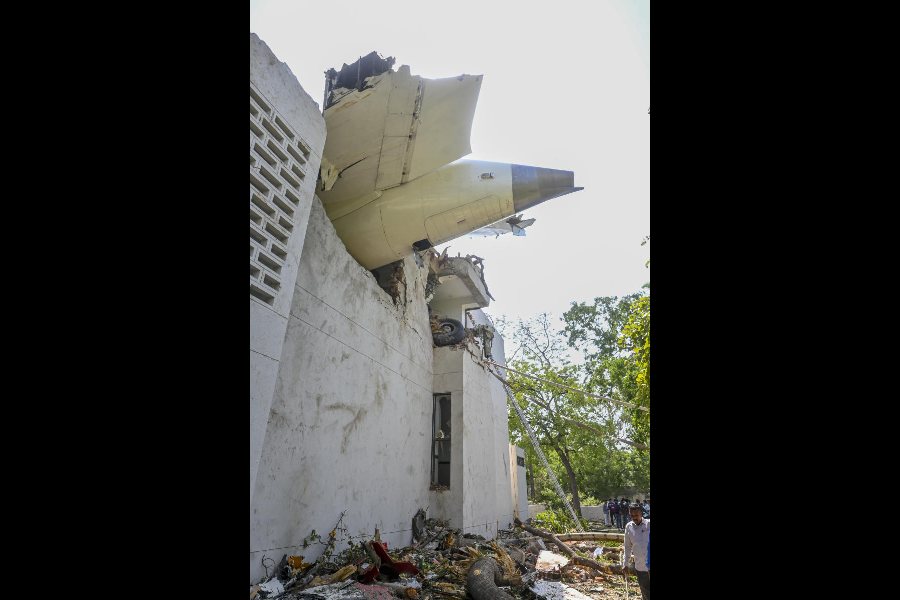 |
| Scaly patches caused by arsenic poisoning |
Millions of people in West Bengal and Bangladesh suffer from arsenic toxicity caused by the contamination of groundwater. Water from tube wells in the depth range of 25-50 metres has the maximum arsenic content, with values exceeding 500 parts per billion (ppb). The maximum permissible limit of arsenic in drinking water is 50 ppb.
To overcome the problem, deeper wells were drilled — to a depth of 120-140m. But over a period of time, it was found that water from about 30-40 per cent of these tube wells in the affected areas had an arsenic content of more than 50 ppb.
Water filters, although much in demand, are mostly based on surface techniques and do not adequately address the gravity of the problem.
But relief may now be in sight, in the form a different kind of filter — a particular aquifer (geological formation containing or conducting groundwater) that keeps out the deadly metal.
The purification method proposed by Taraknath Pal and Pradip Kumar Mukherjee of the Geological Survey of India (GSI), Calcutta, relies on an “orange sand aquifer” in which the arsenic content is well within the permissible limit. The findings are reported in a January 2008 issue of Current Science.
Nature has taken nearly 1.75 million years to deposit the layers of sand and clay brought in by the rivers Ganga and Brahmaputra in their flood plains in West Bengal. Compared to these, the sediments of the Damodar are slightly older. The material is layered in such a manner that the coarsest grains occupy the lowest mantle and the finest clays the top. Hundreds of such cycles are present below the earth’s surface with each coarse layer being laden with water.
The water-laden grey sand layers — the aquifers, actually — occur between a depth of 20 and 50m, a depth commonly tapped by people for drawing water. Government-owned community tube wells, however, tap deeper layers enriched with organic matter at depths of 60-140m. Unfortunately, these grey sand aquifers are also rich in arsenic, the cause of widespread toxicity in the region.
But what perplexed Pal and his colleagues was that the Damodar aquifers were generally free from arsenic. Moreover, they — like their equivalents in Bangladesh — were orange in colour.
To probe the characteristics of the grey sand aquifers and their arsenic content, 140 bore holes were drilled between Baruipur (near Sealdah) and Malda in West Bengal. It was by chance that Pal and his co-workers noticed a 5-10m thick orange sand horizon (or layer) in the Ganga-Brahmaputra flood plains. This, at a depth of 40-50m and sandwiched between two grey sand aquifers. When traced, it was found that it is the same horizon that occurs as orange sand in the Damodar flood plains. It had a layer of brown hard clay at the top and one of bluish-grey hard clay with little pore water at the bottom.
The orange sand is so coloured because of staining with iron oxy-hydroxide. This indicates that in the geological past it was exposed to the sun for hundreds of decades. This caused oxidation which imparted a yellowish-brown colour to the grains.
The researchers set to work on a hunch that the orange sand aquifer of the Ganga-Brahmaputra flood plains might also yield arsenic-free water. They chose Ghentugachi and Gotra villages in Nadia district where arsenic toxicity is at its peak. Four tube wells were drilled in 2006 and water was drawn from the orange sand aquifer. Surprisingly, the arsenic content was much below the permissible limit.
Another interesting observation was that the arsenic content of the orange sand sediments was higher, but the process of release of the metal into the water hadn’t yet begun. Sealed with layers of clay at the top and the bottom, there is also very little chance of contamination with arsenic-rich water from the grey sand aquifers above and below.
The Ghentugachi and Gotra tube wells were periodically monitored and it was found that the arsenic content of water remained within safe limits.
Orange sand could thus act as a natural filter for the arsenic-struck state of West Bengal and Bangladesh, feel the GSI researchers. It would indeed be worthwhile if the Central Ground Water Board maps such aquifers for the guidance of local drillers.











